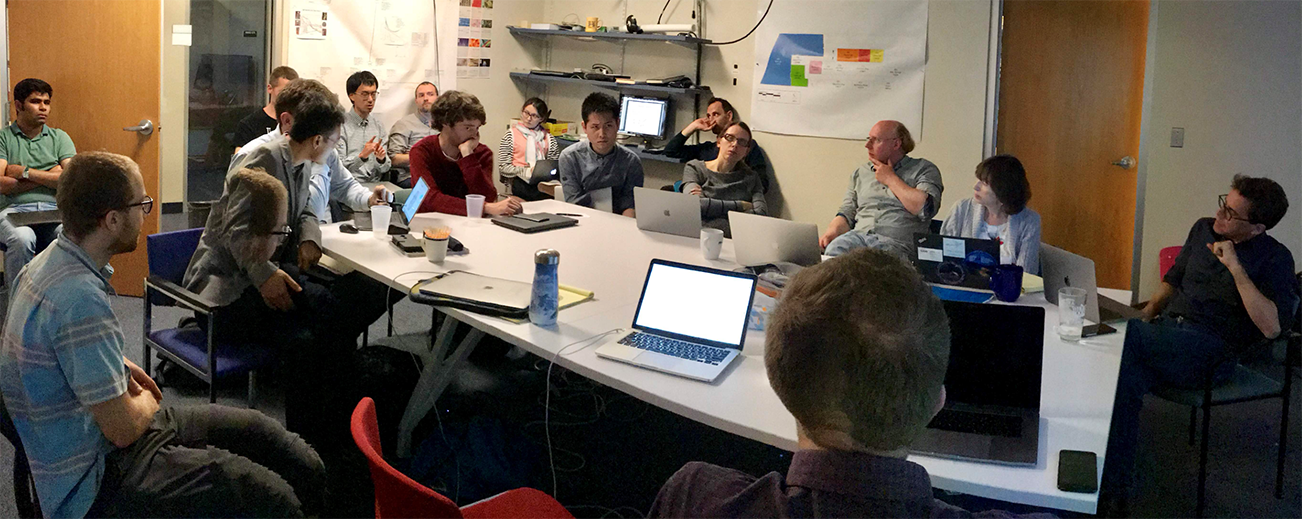|
Daniel Brown from OzGrav’s team at the University of Adelaide travelled to MIT for the A+ Balanced Homodyne Workshop, 11-12 Oct, 2018. Overall this was a productive meeting which favourably demonstrated how the research being undertaken here in the Adelaide node of OzGrav is pushing the future detectors forward.
Recently the next iteration of the LIGO experiment was announced, named A+. This upgrade takes us from Advanced LIGO and further improves the sensitivity. One of the more involved upgrades is to change the gravitational wave readout scheme, from what is currently used and is called “DC Readout” to “Balanced Homodyne Readout” (BHD). Both of these techniques are employed to provide a strong optical field, called a local oscillator, at the output port, which beats with the optical fields generated by a gravitational wave and allows us to measure them on a photodiode. For A+ the plan is pick off a small amount of light from the power recycling cavity through one of its mirrors. We then have to shape and align this light correctly and combine it with the signal coming out of the detector. This beam shaping and designing of optical control systems is some of the core OzGrav research Daniel is undertaking at the University of Adelaide. The outcome of this meeting was that much work still needs to be done. The output part of LIGO is having a complete redesign. New suspension stages must be designed to accommodate the adaptive optic elements being developed at Adelaide. There is also scope for our new beam shape sensing technique to also be employed for controlling these adaptive elements. Next a control system must be designed and modelled for all this, which is being simulated in my modelling software Finesse. In the coming months we aim to write several design documents outlining all the new elements for the BHD system of A+. - Daniel Brown, Postdoctoral Researcher at University of Adelaide
0 Comments
Leave a Reply. |
|
- Home
- About
-
Our People
- Chief Investigators
- Partner Investigators
- Associate Investigators
- Postdocs and Students >
- Professional & Outreach staff
- Governance Advisory Committee
- Scientific Advisory Committee
- Executive Committee
- Equity & Diversity Committee
- Early Career Researcher Committee
- Professional Development Committee
- Research Translation Committee
- OzGrav Alumni
- Research Themes
- Education and Outreach
- Events
- News/Media
- Contact Us
- Home
- About
-
Our People
- Chief Investigators
- Partner Investigators
- Associate Investigators
- Postdocs and Students >
- Professional & Outreach staff
- Governance Advisory Committee
- Scientific Advisory Committee
- Executive Committee
- Equity & Diversity Committee
- Early Career Researcher Committee
- Professional Development Committee
- Research Translation Committee
- OzGrav Alumni
- Research Themes
- Education and Outreach
- Events
- News/Media
- Contact Us


 RSS Feed
RSS Feed








